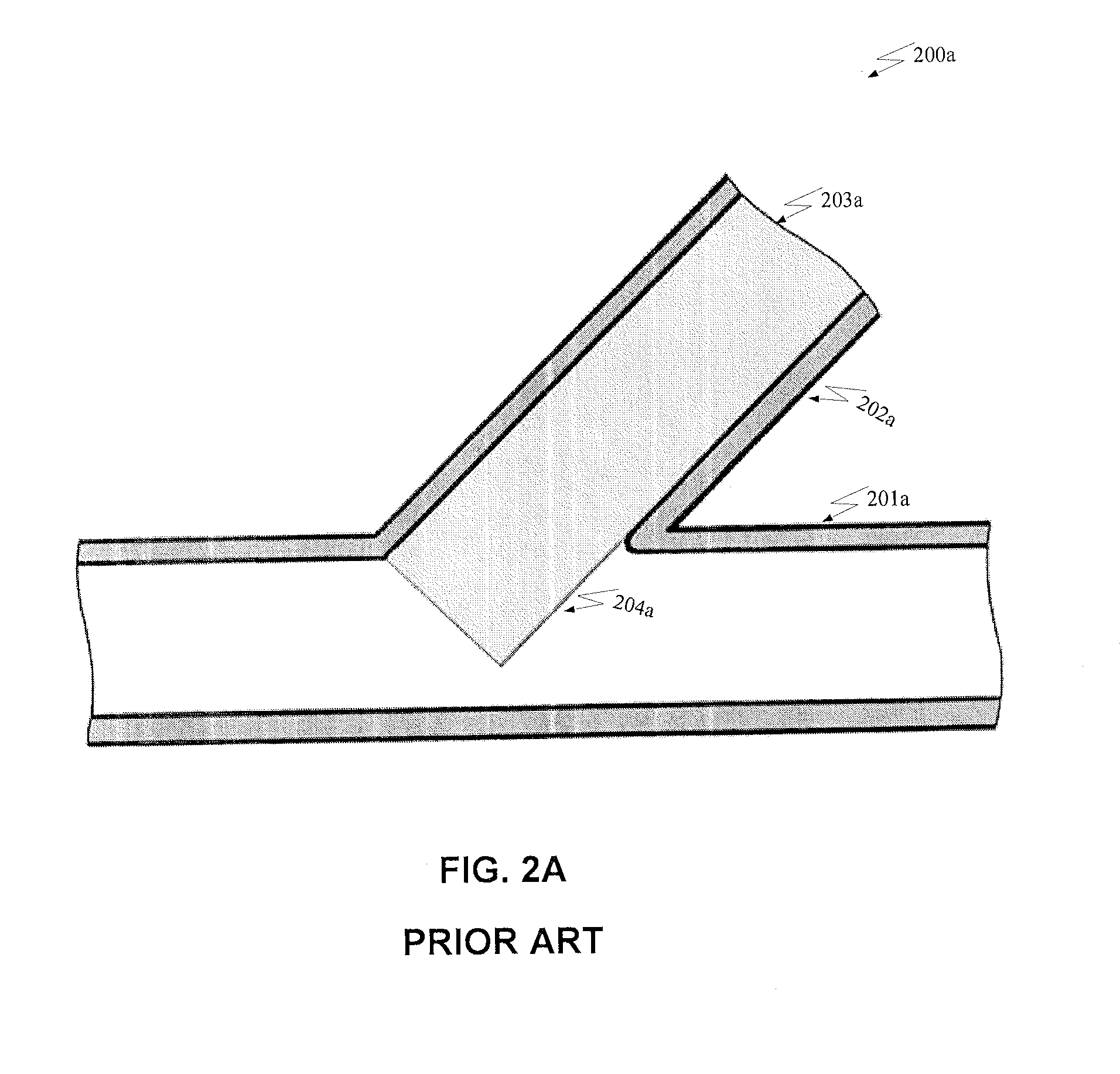Bifurcated Stent and Delivery System
a stent and stent technology, applied in the field of medical stents, can solve the problems of increasing the risk of acute and subacute stent thrombosis, difficult to repair coronary arteries that are bifurcated, and less favorable, and achieves the effect of convenient delivery and deployment, convenient and precise positioning, and simplified bifurcation stent delivery system
- Summary
- Abstract
- Description
- Claims
- Application Information
AI Technical Summary
Benefits of technology
Problems solved by technology
Method used
Image
Examples
Embodiment Construction
[0068]Before embodiments of the invention are explained in detail, it is to be understood that the invention is not limited in its application to the details of the examples set forth in the following descriptions or illustrated drawings. The invention is capable of other embodiments and of being practiced or carried out for a variety of applications and in various ways. Also, it is to be understood that the phraseology and terminology used herein is for the purpose of description and should not be regarded as limiting. The system includes balloon expandable stents.
[0069]The preferred embodiment of the invention provides a bifurcated stent and related delivery system that is deliverable and effectively overcomes the limitations of the prior art. Accurate placement, proper strut apposition, adequate coverage of intimal surfaces and preservation of the geometry of the side branch ostium will result in proper treatment of plaque at or near bifurcations. Part of the system can be used f...
PUM
 Login to View More
Login to View More Abstract
Description
Claims
Application Information
 Login to View More
Login to View More - R&D
- Intellectual Property
- Life Sciences
- Materials
- Tech Scout
- Unparalleled Data Quality
- Higher Quality Content
- 60% Fewer Hallucinations
Browse by: Latest US Patents, China's latest patents, Technical Efficacy Thesaurus, Application Domain, Technology Topic, Popular Technical Reports.
© 2025 PatSnap. All rights reserved.Legal|Privacy policy|Modern Slavery Act Transparency Statement|Sitemap|About US| Contact US: help@patsnap.com



